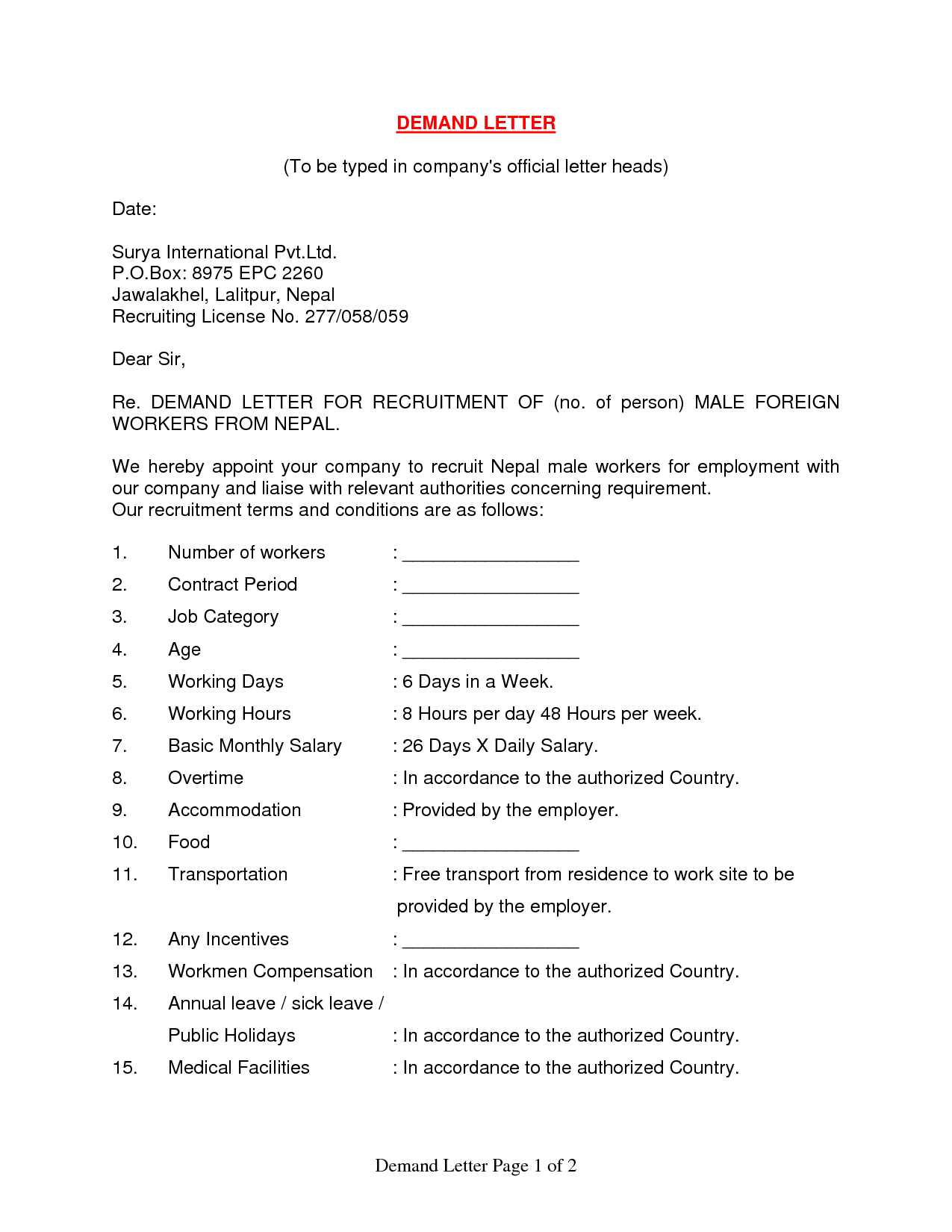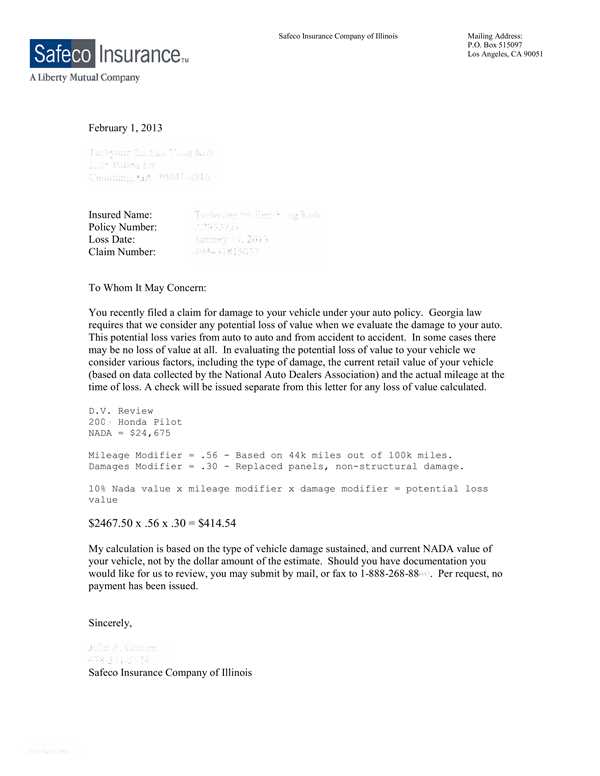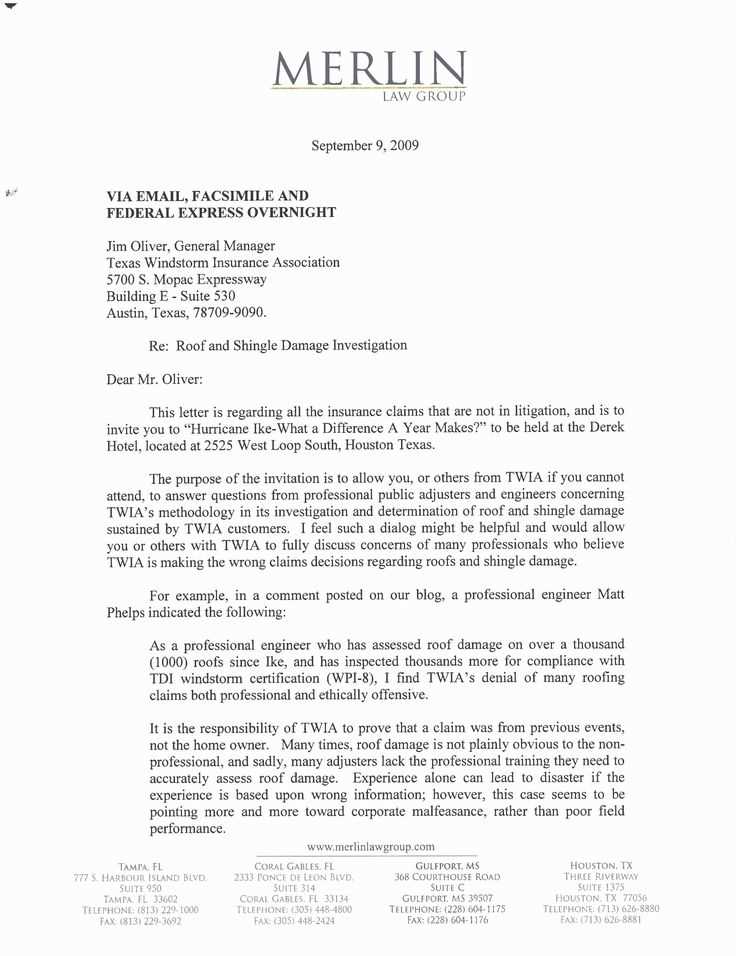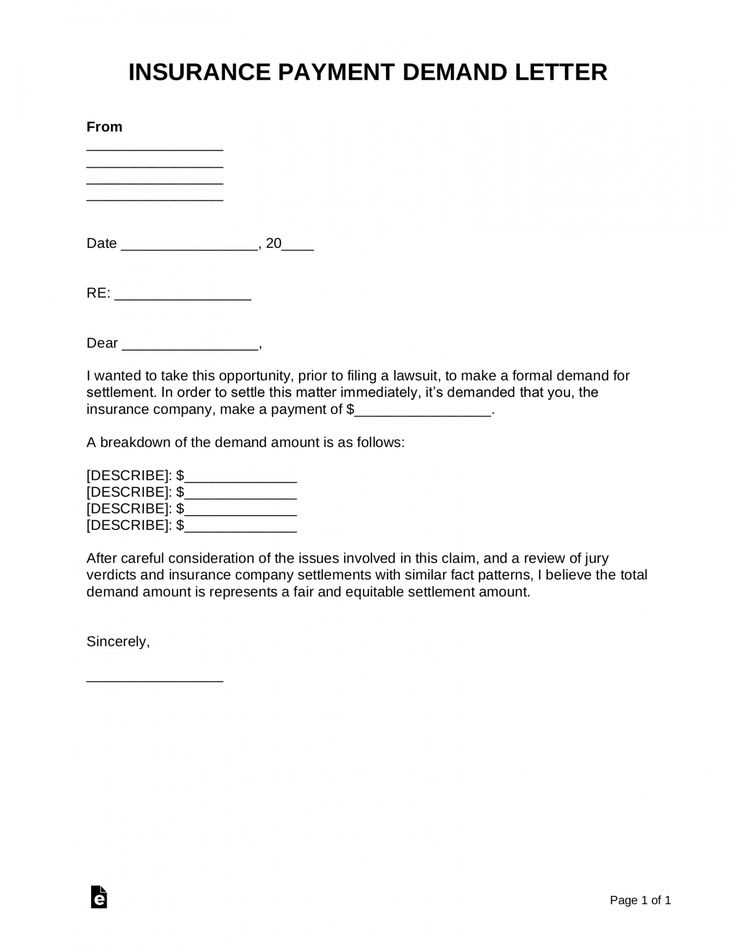Auto Insurance Demand Letter Template for Claims

When you’re seeking compensation from an insurer for a recent claim, it is essential to present your case clearly and professionally. This formal communication is meant to outline the facts of the incident, explain the damages, and request the appropriate amount to cover your losses. The right structure and tone can make all the difference in how your request is handled.
What Should You Include in Your Request?

To ensure your claim is processed smoothly, there are several key pieces of information to include:
- Personal Information: Begin with your name, policy number, and contact details to make it easy for the recipient to identify you.
- Incident Details: Describe the event that led to the claim. Be factual and precise, including the date, time, location, and circumstances of the incident.
- Damage Assessment: Provide a detailed list of the damages or injuries, including estimates for repair or medical costs where applicable.
- Compensation Request: Clearly state the amount you’re seeking, supported by the damage assessment and any relevant documentation.
Why Tone Matters

The tone of your document plays a significant role in its effectiveness. Maintain a professional and polite tone throughout, even if you’re frustrated or upset. A respectful approach is more likely to receive a positive response. Avoid being overly aggressive or emotional, as this can harm your chances of getting the compensation you deserve.
How to Format Your Document
Formatting your communication in a clear and organized manner will ensure that the recipient can easily review your claim. Use short paragraphs, clear headings, and bullet points where possible. Keep sentences concise and avoid unnecessary details. A well-structured document is more likely to be taken seriously.
What Happens After You Send Your Claim?

Once you’ve submitted your request, the next step is waiting for a response. Depending on the insurer’s procedures, they may reach out for more information or schedule an assessment. Stay patient and be prepared to follow up if needed. If the response is not satisfactory, there are further steps you can take, such as escalation or legal action.
Understanding Claims and Writing Effective Requests

When seeking reimbursement from a provider, it’s crucial to present your request in a clear and organized way. The process involves explaining the situation, outlining the damages or losses, and requesting a fair compensation amount. A well-crafted request increases the chances of a favorable outcome and ensures a smooth review process.
What is a Formal Request for Compensation?
A formal request for compensation is a document where you detail the event, the resulting damages, and the amount of reimbursement you are seeking. This type of communication is used to initiate the claims process and starts the negotiation between you and the provider.
Key Elements of a Compensation Request
When drafting your request, several critical details must be included for it to be effective. These elements are vital for providing a full understanding of your case:
- Claimant Information: Include your full name, contact details, and policy number to ensure the provider can easily identify you and your account.
- Incident Overview: Explain the circumstances of the incident clearly, including the date, time, and location. Provide any relevant documentation or evidence.
- Loss Assessment: Describe the damages or injuries in detail, accompanied by estimates or invoices if possible.
- Compensation Request: Clearly state the amount you are requesting, supported by the evidence provided.
How to Write a Strong Request
Crafting an effective request involves presenting the facts in a logical and straightforward manner. Begin by introducing yourself and providing all necessary information. Then, explain the incident, provide your evidence, and conclude with a clear and concise statement of your desired compensation. Stay factual and avoid unnecessary details.
Tips for Drafting an Effective Document
- Keep the tone professional and respectful.
- Be clear and direct in your explanation of the event and damages.
- Ensure all relevant documentation is included to support your claim.
- Be realistic in your compensation expectations, backed by evidence.
Common Mistakes to Avoid
Many individuals make errors when drafting their requests, which can delay or even hinder the claims process. Some common mistakes include:
- Vagueness: Avoid being unclear or leaving out essential details that could weaken your case.
- Overly Aggressive Tone: Keep the communication polite and professional, even if you’re frustrated.
- Lack of Documentation: Always include supporting documents like receipts, estimates, or photos when necessary.
- Failure to Follow Up: Don’t forget to follow up on your request if you don’t receive a response in a reasonable amount of time.